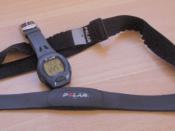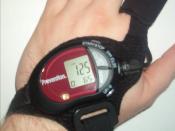Introduction
The gammarus is a marine animal found in shallow waters. Reaching lengths of 2 cm (George), it feeds on diatoms, crustacean larvae and other tiny attached or floating food items (Craig). Its outside environment easily affects this tiny organism.
When a crustacean is placed in alcohol it's heart rate is known to decrease. This is due to the interference with nerve pulses. For example, an experiment was conducted when a Daphnia was placed in ethanol. The heartbeat of a Daphnia is regulated by nerve impulses, which are generated by pacemaker neurons located in the cardiac ganglion. These impulses are then transferred to larger follower neurons, which carry the signal to the cardiac muscle (causing it to beat). Ethanol interferes with this process by binding to nerve receptors and decreasing the impulses generated by those nerves. Therefore, with fewer impulses movements and heart rate become slower (Carlson).
With this procedure, similar to the one to be carried out, it is expected the gammarus (a crustacean like that of the Daphnia) will have a decreased heart rate in ethanol as well.
Therefore, if the Gammarus is subjected to increasing concentrations of alcohol, then the heart rate will decrease with the coinciding alcohol concentration increases.
Procedure
In this experiment the effect of alcohol on the heart rate of a gammarus was tested. In preparation, varying concentrations of ethanol were prepared - 2%, 4% and 6%. O% ethanol was used as a control. Three gammarus' were obtained and placed onto slides individually. First the heart rate of gammarus one was observed under the dissecting microscope as it was recorded with no subjection to alcohol (0% alcohol). Counting the number of beats for ten seconds and multiplying that value by 6 obtained beats per minute. This served as control data. Then the same...


